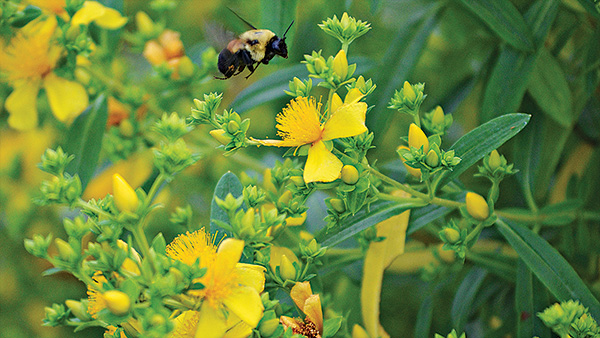
Growing native plants is the gardening equivalent of having your cake and eating it too. Not only are these plants beautiful and more likely to thrive in your landscape, they also play a crucial role in sustaining the living landscape for pollinators, birds, and other animals.
For their seemingly endless benefits, it’s always worth adding another native plant to your garden. Below, find native plants for the Northeast that will please human, animal, and insect guests in your garden.
1. Cinnamon clethra

Name: Clethra acuminata
Zones: 5–8
Size: 6 to 10 feet tall and wide
Conditions: Full sun to partial shade; moist soil
This beauty gets its name not from the sweet clove scent of its summer blooms but rather from the passing resemblance its three-toned exfoliating bark has to culinary cinnamon. This large, multistemmed shrub, a lesser-known relative of summersweet (Clethra alnifolia, Zones 5–8), features somewhat drooping leaves crowned with dripping midsummer racemes of ivory flowers that are a favorite of many nectar feeders. The leaves of cinnamon clethra ripen to a rich golden yellow in autumn and provide a lovely foil for chains of fuzzy, taupe-colored seed capsules that persist though winter. In three to five years, the bark begins to peel off in thin strips to reveal a smooth cinnamon and cool gray underbark.
2. Sassafras

Name: Sassafras albidum
Zones: 4–9
Size: 30 to 60 feet tall and 20 to 30 feet wide
Conditions: Full sun to partial shade; well-drained soil
Sassafras has long been valued for both its medicinal and ornamental qualities. In Colonial times, its export rivaled that of tobacco. Its root was the original flavoring in root beer. Sassafras grows into a medium-size tree with a tiered arrangement to the branches that is reminiscent of many conifers. It spreads by both seed and root sprouts to form groves or thickets. The distinctive, one- or two-fingered, mitten-shaped leaves appear after tufted yellow flowers in spring, and female plants bear oval, blueberry-size fruits set in crimson cups that migrating songbirds relish. Its fall foliage ranges from soft yellow to blazing orange. Sassafras is perfect in spots where its wanderlust will not present a problem.
3. Pennsylvania sedge

Name: Carex pensylvanica
Zones: 3–8
Size: 6 to 12 inches tall and wide
Conditions: Partial to full shade; well-drained soil
Sedges rarely get the attention they deserve in gardens. With hundreds of species to choose from, you can find a sedge for just about any combination of sun, shade, moisture, or drought. However, of all the sedges I have grown, Pennsylvania sedge is probably the most useful in the garden. It is a mat-forming species that grows quickly into a light green turf. It is tolerant of dry, infertile soils, and it will grow in full shade, but it is best with a few hours of direct sun and a spring application of compost or organic fertilizer. I use it extensively as a low-maintenance ground cover under trees and shrubs.
4. Great merrybells

Name: Uvularia grandiflora
Zones: 4–9
Size: 18 to 24 inches tall and 12 to 18 inches wide
Conditions: Partial to full shade; moist, well-drained soil
Many woodland wildflowers are as finicky or ephemeral as they are alluring. A notable exception is great merrybells, a charming and resilient lily relative bearing clumping stems that are densely clothed in smooth, oval leaves. Large, pale yellow to gold, bell-shaped flowers dangle atop the expanding stems in early spring. These blooms yield to fluted capsules that spill large seeds in fall. If seeds fall into the rich, moist soil that this species prefers, in time seedlings will grow to expand the colony’s border.
Bill Cullina is the former president and CEO of the Coastal Maine Botanical Gardens in Boothbay.





















Comments
Log in or create an account to post a comment.
Sign up Log in